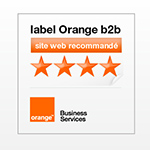As the web evolves into « the social web », it is clear that companies have no other choice than changing the way they consider and interact with their clients and customers, which will have a tremendous impact on their inner structure and, gradually, in how they do business. Last week, I was lucky enough to meet Jeremiah Owyang at Paris Tweetup and assist his presentation of the 5 eras of the social web, which may serve us as a guidebook to understand the deep evolution in the way people will interact, create, and buy in the next years.
Whether B2B or B2C, businesses are facing a new challenge, and we soon will see the raise of E2B (employees to business) as a dominant paradigm. In the next few posts, I will try to focus on the changes that need to take place inside the enterprise, and the pitfalls to avoid.
B2C isn’t Business to Customers anymore, but Brands to Customers
Since branding isn’t a recent discipline, the last decade has seen the very end of the anonymous or generic product, and every consumer goods sold or exchanged through the world is now supported (or supporting) a brand. To be short, it now has a personality, lies into a more or less global strategy, is associated to definite behaviors. Product selling is now all story telling. But the whole branding and marketing process is now open to the public. The brand itself no more is a global voice talking to the customer, engaging with him through social media means that packaged brands are connected individuals who all add up to the customer experience as well as to the brand’s perception.
Choose the right spokespersons
It is up to the company behind the brand to carefully choose who will interface with customers. Customer service is no more a service; it is becoming a strategic front end to the brand, and people twittering or blogging in its name must convey and propagate the very values of the brand. Is the brand perceived as young and active? Its social media actors must deliver the same message to avoid affecting the brand’s identity. Choosing the right spokespersons is mandatory, and isn’t an easy task.
Don’t over impersonate your brand
Another danger is to concentrate your whole social media efforts into a single individual. Not only must your speakers deliver a message coherent with the brand, but they must add value to it at least as much as the opposite. In a world where people are valued over brands, achieving the right balance between both might become overwhelming. Think about what would happen if your social media manager leaves the company. Who will suffer most? If the answer is “the brand”, you have a lot to care about.
It is all about people
Besides your spokespersons, everybody in your company is now a stakeholder. Same as your customers’ voices have to be heard and listened to, every employee is now on-board in your brand’s identity and behaviors, and has the power to influence its personality and perception. Yesterday’s brands could often be embodied by the founder or the CEO of a company, who imprinted his/her personal value and vision into the brand DNA. These times are now over, and E2B is the business model we all have to deal with. B2B companies are somehow less concerned about brands than consumers goods are, but are facing similar challenges.
To be followed…





